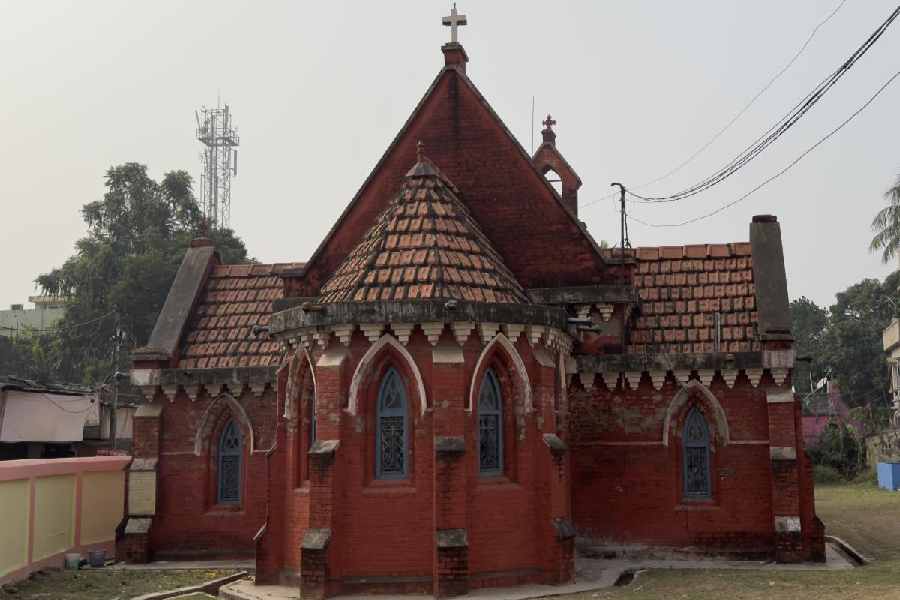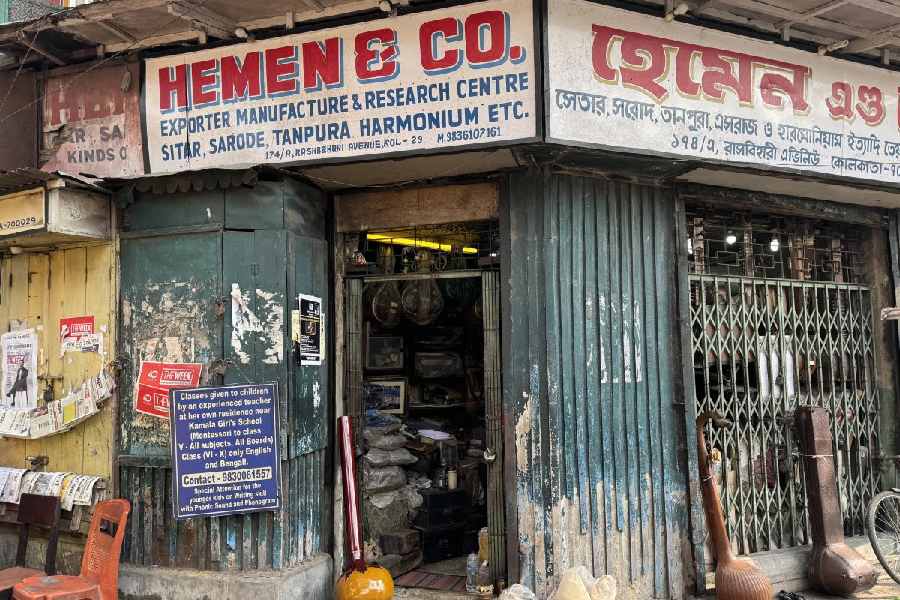In the early 1970s, my father tried to study photography under the guidance of a few professional photographers. Students were poor but film was expensive, yet he returned month after month with rolls of exposed films containing decent shots. In the 1980s, around six billion photographs were taken each year. In the era of digital photography that number has exploded. Our phones have become the lens through which we capture moments. But not all phones are born equal.
The iPhone started the trend of snapping shots with giddy enthusiasm. Even after all these years, the smartphone from Apple delivers the best output — not just for social media, shots out of the iPhone qualify for family albums.
Take the case of the new iPhone 16 series — it’s an exceptional piece of equipment with top-of-the-line camera capabilities. Of course, there is the new Camera Control but I am very excited by the 48MP ultra-wide sensor, improved audio recording features (wind reduction and Audio Mix), and Photographic Styles. In the last couple of weeks, I have captured at least a thousand photos and have GBs of ProRes footage with the new iPhone 16 Pro.
I constantly lean into the ultra-wide perspective as an amateur photographer because I love the sense of place and intimacy it provides. The iPhone 16 Pro delivers... in a big way.
Another feature I have fallen in love with is Photographic Styles. It’s not a filter. It’s a way to offer everyone who has an iPhone the tools to easily personalise their look in photos.
As always, my iPhone’s camera roll is a chaos of pictures and videos because I want to capture moments that tell a story. And that’s the secret sauce of the iPhone — it makes you a storyteller.
Here are four stories I captured in the last few months (some with the iPhone 15 Pro Max) and I intend to keep adding to the list in the next many months.
An unusual man
After buying a kilogram of mihidana from a store near Curzon Gate in Burdwan, my eyes rested on what looked like a red-brick facade out of a fairy tale stuck in a concrete jungle.

Christ Church of Burdwan dates back to the early 1800s and its construction was supervised by Captain Charles Stuart, whom many call ‘Hindoo Stuart’.
Christ Church of Burdwan is, of course, old, dating back to the early 1800s but there’s more to it than meets the eye. There are enough rainwater pipes with spouts depicting the lion’s head and the beautiful red semi-circular dome is difficult to miss. What’s important is the contribution of an East India Company employee — Captain Charles Stuart, whom many call ‘Hindoo Stuart’. He supervised the construction of the church.
Stuart spent most of his life in India, gathering artefacts and writing. Arriving in February 1777, the cadet had his usual share of promotions but, despite the many wars the Company fought, he wasn’t quite in the midst of any of them.
In 1798 the Irishman anonymously presented a short tract entitled ‘Observations and remarks on the dress, discipline, etc. of the military’ but it was his 1808 writing, Vindication of the Hindoos, that’s considered important for the way it somewhat tried to defend the traditional way of life in India.
Stuart’s stay in India was interrupted in 1804 and he spent the next five years in Britain, before resuming service in December 1809, becoming Major-General in 1814.
His final years were spent at a house in Calcutta’s Wood Street, among thousands of books and artefacts. After his death on April 1, 1828, all of these were sent to London to be auctioned at Christie’s and ultimately donated to the British Museum. In death, there were accusations about the method he used to get some of the artefacts.
But nothing should stop a visitor to Calcutta from visiting his grave in the South Park Street Cemetery. Constructed of elaborately carved black stone, the recesses on each side of the gateway are occupied by sculptured figures depicting Indian mythology. The monument was in a deplorable condition in 1907 but later, it was restored to some degree.

Charles 'Hindoo' Stuart's tomb in South Park Street Cemetery.
His tomb is a reminder of the complex (and often problematic) relationship the Brits had with the country.
Twang of George Harrison’s strings
The walls of 174/A Rashbehari Avenue are lined with photographs of Alauddin Khan and his son Ali Akbar Khan. Then there is Amjad Ali Khan. Sitars and sarods hang from the ceiling of Hemen & Co, which remains the He-man of the music world.

Hemen & Co on 174/A Rashbehari Avenue was a favourite address for George Harrison.
Hemen Sen, the true master of the shop, has been exchanging notes with George Harrison and Pandit Ravi Shankar in the sky for many years, yet it’s business as usual at this iconic address.
Sen had the foresight to open shop in Deshapriya Park when he arrived in Calcutta in the 1940s, and take sitar lessons from Ali Ahmed Khan. He, of course, also had lessons in playing the sarod from Ustad Ayet Ali Khan, the brother of Alauddin Khan. It will be remiss on my part to not mention the role Hiren Roy and his shop — not far this address — have played in promoting Indian music and instruments to the Western audience.
Hailing from Comilla in Bangladesh, Sen was always interested in music though his father, Jogeswar Chandra Sen (attached to the cottage industries department of the Maharaja of Tripura), was not connected with music.

Inside Hemen & Co was established by Hemen Sen, who hailed from Comilla in Bangladesh.
If you stay long enough at the shop, you are certain to hear about how types of wood are used for making the sarod — teak and ‘tun’, the former producing sounds that are sharp while the latter, sweet and soft.
And if can stick around longer, George Harrison’s name will weave into the conversation. Pandit Ravi Shankar, who was a patron here, first met Harrison in London in June 1966. Their friendship is now the stuff of history books.
Harrison’s sitars were shipped from here. Legend has it that the man himself had visited the shop. Harrison in Calcutta? We keep talking about the Beatle’s visit to the city in early 1980s and was seen at Netaji Indoor Stadium. His 1976 visit to Uday Shankar’s address in Calcutta is well-documented in an issue of the now-defunct Junior Statesman. And the Fab Four, during their June 1964 visit to Hong Kong, probably landed at the Calcutta aerodrome for refuelling.
But a visit to Hemen & Co is not about Harrison or Shankar. It’s about feeling the joy of creating music.
A bhadrolok’s response to the Raj
My grandmother had an addiction — books. She managed to attend Brahmo Balika Shikshalaya, on Upper Circular Road, till she turned 14 while turning in her life to my grandfather to rear children and make black coffee. Or, that was her understanding. Instead, it turned out to be decades spent among books and newspapers with my grandfather encouraging everyone to pen their freedom songs.
The grand-dude and grand-dudette spoke of a man who inspired them — Sivanath Sastri, a name integral to the Brahmo Samaj movement. Though never a part of the Samaj, my grandparents had immense respect for its members, and spoke fondly of Sadharan Brahmo Samaj on Cornwallis Street.
Perhaps it was Sastri’s closeness to journalist and writer Ramananda Chatterjee that impressed them. Or was it Sastri’s editorship of the children’s magazine Mukul? But definitely it had something to do with Sastri’s stand on a number of societal issues.
Reformer Keshub Chandra Sen, a stalwart of the Brahmo Samaj, was faced with an event that had an impact on Bengal. In 1877, rumour was that his daughter, Sunity Devi, was to marry the young Nripendra Narayan, Maharaja of Coach Behar. The girl was slightly below the age fixed as the minimum for the bride in the Special Marriage Act of 1872, which Keshub had supported. Ultimately the marriage took place in 1878. There were other wheels within wheels.
Many left to form Sadharan Brahmo Samaj in 1878 and handsome contributions from Debendranath Tagore (Rs 7,000) and others followed. Sastri was one of the pillars of Sadharan Brahmo Samaj.
He was a fighter: Wanted to fix the marriage age for girls at least 16. With S.N. Banerjee and Anandamohan Bose he founded the Indian Association, wrote a number of important books (including Nirbasiter Bilap) and highlighted his organisational skills with Sadhanasram. And how can I forget — he and his friend Babu Durgamohan Das had the tomb of Raja Ram Mohan Roy repaired at Arnos Vale in Bristol.
Rocket Man of Calcutta
Stephen Taylor Hector Smith — or Stevie — never made his life a homage to the humdrum. He was the kind of man who turned any place where he laid his hat into his home — 16 Collin Lane, 14 Elliot Road, 18 McLeod Street and 25 Elliot Road (second picture), or neighbourhoods where the Anglo-Indian community once thrived.
He had a unique skill — pioneer rocket mails, long before the birth of Indian Space Research Organisation. The idea of the rocket mail had marinated for decades until it finally began to take off in the 1920s. Back then, anybody who could get a mail delivered to remote locations was considered a hero. Smith was a hero.
Smith’s father, Charles William Bath Taylor, travelled from Brigg in Lincolnshire to serve as the superintendent of the Hoolungooree Tea Estate, quickly moving to a plantation owned by Andrew Yule Company. Enter Stephen Smith. And soon after Calcutta came into the picture, though he studied at St Patrick’s School in Asansol where he became interested in rockets.
The man had several day jobs. He worked briefly in the customs department in Calcutta and then joined the Calcutta police as a round sergeant on a salary of Rs 100 per month in 1913. Park Street police station (first and third pictures), which was a stone’s throw away from his residence, paid for his bread and butter for sometime. Smith was also a dental surgeon and that remained his main source of income.
Ultimately, his name was entwined with that of philately in India. In 1924, he founded Aero Philatelic Club of India, which became Indian Airmail Society in 1930. It was only in 1934 that he began testing rocket mails. It was launched from a ship called Dispatch Vessel Pancy on the Hooghly. The idea was to deliver mail across the water into Sagar Island. It failed. But Smith continued and success soon became his friend. In one of his attempts, 220 miniature copies of The Statesman newspaper were carried.
Of course, there is more to this incredible man and you can read it in one of the finest books I am currently poring over — India’s Forgotten Rocket Pioneer by Gurbir Singh.











